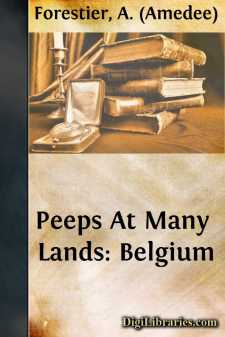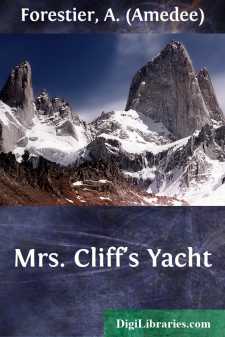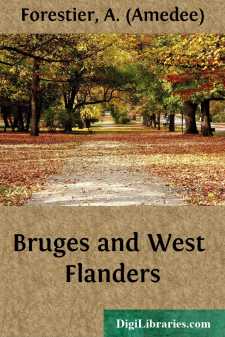Categories
- Antiques & Collectibles 13
- Architecture 36
- Art 48
- Bibles 22
- Biography & Autobiography 813
- Body, Mind & Spirit 142
- Business & Economics 28
- Children's Books 14
- Children's Fiction 11
- Computers 4
- Cooking 94
- Crafts & Hobbies 4
- Drama 346
- Education 46
- Family & Relationships 57
- Fiction 11829
- Games 19
- Gardening 17
- Health & Fitness 34
- History 1377
- House & Home 1
- Humor 147
- Juvenile Fiction 1873
- Juvenile Nonfiction 202
- Language Arts & Disciplines 88
- Law 16
- Literary Collections 686
- Literary Criticism 179
- Mathematics 13
- Medical 41
- Music 40
- Nature 179
- Non-Classifiable 1768
- Performing Arts 7
- Periodicals 1453
- Philosophy 64
- Photography 2
- Poetry 896
- Political Science 203
- Psychology 42
- Reference 154
- Religion 513
- Science 126
- Self-Help 84
- Social Science 81
- Sports & Recreation 34
- Study Aids 3
- Technology & Engineering 59
- Transportation 23
- Travel 463
- True Crime 29
Peeps At Many Lands: Belgium
Description:
Excerpt
CHAPTER I
THE SANDS OPPOSITE ENGLAND
If you leave the mouth of the Thames, or the white chalk cliffs at Dover, and sail over the water just where the English Channel meets the North Sea, you will in about three or four hours see before you a long expanse of yellow sand, and rising behind it a low ridge of sandhills, which look in the distance like a range of baby mountains. These sandhills are called "dunes." Here and there at intervals you will see a number of little towns, each town standing by itself on the shore, and separated from its neighbour by a row of dunes and a stretch of sand.
This is your first view of the little country called Belgium, which is bounded on the east by Holland, and on the west by France. It is, from end to end, about half the size of Ireland.
There are no cliffs or rocks, no shingle or stones covered with seaweed. There are no trees. It is all bare sand, with moss and rushes on the higher ground above the beach. In winter the wind rages with terrific violence along the coast. The sand is blown in all directions, and the waves dash fiercely on the shore. It is cold and stormy, with mist and dark clouds, and sometimes violent showers of hail. But in summer all is changed. Often, week after week, the waves roll gently in, and break in ripples on the beach. The sky is blue, and the sands are warm. It is the best place in the world for digging and building castles. There are very few shells to gather; but there are no dangerous rocks or slippery places, and children can wade about and play in perfect safety. So many families—Belgians, English, Germans, and a few French—spend the summer holidays there.
Hundreds of years ago the storms of winter used to drive the waves ashore with such violence that the land was flooded, and whole villages were sometimes swept away. So the people made ramparts of earth to keep back the water, till by degrees many parts of the Belgian shore were thus protected. They still continue to build defences against the sea; but instead of earth they now use brick and stone. It looks as if in a few years the whole coast will be lined by these sea-fronts, which are called digues de mer.
A digue, no matter how thick, which rests on the sand alone will not last. A thick bed of green branches is first laid down as a foundation. This is strengthened by posts driven through it into the sand. Heavy timbers, resting on bundles of branches lashed together, are wedged into the foundations, and slope inwards and upwards to within a few feet of the height to which it is intended to carry the digue. On the top another solid bed of branches is laid down, and the whole is first covered with concrete, and then with bricks or tiles, while the top of the digue, at the edge of the seaward slope, is composed of heavy blocks of stone cemented together and bound by iron rivets.
The finest and longest digue is that which extends from Ostend for about nine miles. It is a good place for bicycle rides. No motor-cars are allowed on it.
Each of the little towns which you see dotted along the coast has a digue of its own, on which there is a row of villas and hotels facing the sea. Among the dunes behind the digue there are more villas. These are generally very picturesque, with verandas, red-tiled roofs, and brightly painted woodwork.
All day long in summer the digue of each town is crowded by people walking about in the sunshine, or sitting watching the bathers and the children playing on the sands. It is a very gay sight. There are prizes for those who build the best castles, and it is curious to see hundreds of little Belgian, English, French, and German flags flying on these small forts, and to hear the children shouting to each other in so many different languages. It makes one think of the Tower of Babel.
From six in the morning till six in the evening bathing-machines go to and from the water, and often there seem to be as many people in the sea as on the shore....









![A history of China., [3d ed. rev. and enl.]](https://digilibraries-com.s3.eu-central-1.amazonaws.com/covers/2eac5372-aeee-46a0-90e7-67e24bd8e549.jpg)




